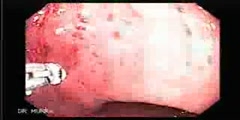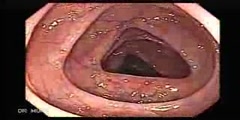The Endoscopy Evolution
The evolution of endoscopes has been driven by doctors who have always dreams of bringing better care to patients and by engineers who made efforts to make these dreams come true. It has also been supported by new technological developments and materials that are immediately incorporated into product design in order to accelerate the evolution by leaps and bounds. A new material called glassfiber, developed in the United States in the 1960s, attracted a great deal of attention in various industrial sectors. The developers of endoscopes were among the first ones to turn to glassfiber. Basil Hirshowitz and his associates, for instance, used glassfiber in their endoscopes to take advantage of the glassfiber's characteristic of transmitting light from one end to the other even when it is bent. Their endoscopes allowed direct observation of the interior of a stomach. 1964 when the first gastrocamera with a fiberscope - the much-anticipated camera with an "eye" -was invented. After all these years, doctors became capable of performing real-time observation of the stomach interior for the first time. The era of gastrocameras came to an end around 1975, when they were completely replaced by fiberscopes. Moreover, endoscopes found wider applications for examinations of other body parts including the esophagus, duodenum, large intestine, bronchus and gallbladder. In addition to clinical diagnoses applications, endoscopes are now used for treatment purposes, aided by progress made in endoscope-aided treatments. Thus, endoscopes have established themselves as an indispensable instrument in the medical community. A videoscope (electronic scope) is an endoscope with a built-in video camera using CCD (charge-coupled device). It converts images into electric signal for display on a TV monitor. November 2002 saw the unveiling of the world's first endoscopic system based on HDTV technology, which radically changed the concept of endoscopes. The system took full advantage of the cutting-edge imaging technology capable of delivering clearer images for extremely accurate diagnoses so that even a minute lesion cannot be missed. Efforts to develop the endoscopes of tomorrow still continue to this date. Engineers are working continuously to overcome a number of challenges in an attempt to bring this dream device closer to a reality.













